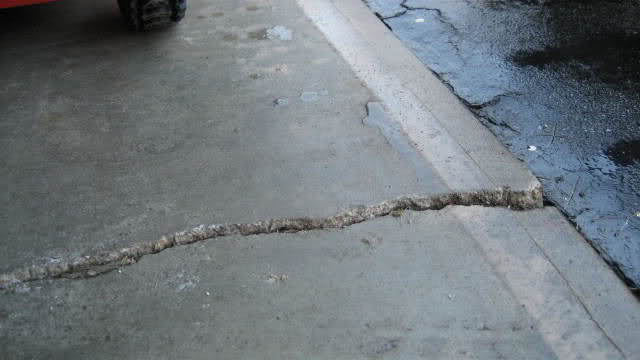How Does Weather Affect the Longevity of Concrete?
Once it is poured, set, and cured, concrete is one of the most durable materials known to humans. There’s a reason that concrete is the second most widely used substance on earth after water. It has a long lifespan, it’s incredibly easy to maintain, and it’s resistant to fire, high temperatures, wind, and water – among other things.
With all that in mind, one might think that weather has very little effect on concrete. Practically, however, we know that can’t be true – if it were, we wouldn’t need to worry about potholes and cracked foundations. In this brief article, we’ll give a basic overview of how weather can affect concrete and the steps that concrete installers can take to mitigate those effects:

How weather affects recently poured concrete
Concrete is at its most vulnerable when it’s first being poured. As such, weather can have serious negative impacts on freshly poured concrete. This is why concrete is optimally only poured in specific weather conditions. When weather conditions are suboptimal, concrete installers will use a variety of techniques and tools to improve the setting and curing process.
Heat
The maximum temperature of concrete should remain at around 95ºF while it is setting or being cured. Ideal conditions for freshly poured concrete are between 50-60ºF. Obviously, temperatures are rarely exactly ideal, which is why installers will use techniques, including the use of chemical additives, to improve the setting and curing process in hot weather.
Why is heat so problematic for concrete when it’s curing or setting? In short, heat promotes evaporation. This can lead to cracks in the concrete. This problem is increased when nighttime temperatures are much lower than daytime temperatures, as rapid expansion and contraction can promote cracking.
Cold
Cold is, in many ways, more problematic than heat. While heat allows concrete to set and cure more quickly, cold actually impedes the process, creating longer setting and curing times.
Worse yet, cold can limit concrete’s overall strength. Part of the process of concrete setting and curing involves crystallization. Through the crystallization process, concrete can obtain a compressive strength capable of resisting up to 500 psi in 24 hours. When the weather is too cold (under 15°F), however, crystals cannot form at all, which drastically reduces the end strength of concrete.
As with heat, there are techniques and chemicals that can be used to limit these problems, but the best method is to avoid pouring concrete in very cold weather.
Another problem with cold weather occurs when the concrete is poured into frozen ground. When the ground thaws, the concrete will settle, causing serious damage.
Wind
The effect that wind has on unset concrete is quite similar to the effect of heat. Wind increases the rate of evaporation, which causes the concrete to set more quickly. This can lead to improper curing, and a decrease in the concrete’s overall abrasion resistance, as well as leading to cracking. Additionally, wind in very cold temperatures can add to the problems caused by cold weather.
Precipitation
Precipitation, be it wind, rain, or hail, can lead to all kinds of problems in concrete that hasn’t finished setting. The surface of the concrete can be damaged, which will create an uneven finish. The structural integrity of the concrete can also be compromised, decreasing its overall strength. Freshly poured concrete is very delicate – any increase in moisture can be detrimental to the setting and curing process, as well as to the final product.
How weather affects cured concrete
When it’s not yet set or fully cured, the list of what damages concrete is long. Once the concrete is properly cured, however, the impacts of most weather should be minimal. There is one important exception, however – the freeze-thaw cycle.
The freeze-thaw cycle
Almost all materials will expand and contract as the weather changes, contracting as they cool and expanding as they heat. Water is an interesting exception – it actually expands when it freezes. Concrete that has not been sealed is porous, and water that makes its way into the concrete will freeze, causing strain, cracking, and holes.
This is a particular problem in infrastructure, including roads and bridge decks. There are, of course, some solutions. Concrete on bridge decks should be sealed, preferably using a long-lasting sealant. The incorporation of phase change materials (PCM) into concrete can also help it withstand the natural expansion and contraction caused by changes in temperature.

Conclusion
The weather has a substantial effect on concrete, both when it’s setting and curing and once it’s finished curing. Concrete installers, engineers, and other stakeholders must pay close attention to how the weather might affect concrete during installation and how the climate might affect the concrete’s lifespan once the installation is complete. For project managers, finding qualified installers is essential. Consider maintenance costs when completing a project – well-maintained concrete can save businesses and governments millions of dollars in repair and replacement costs.
Back To Blog
